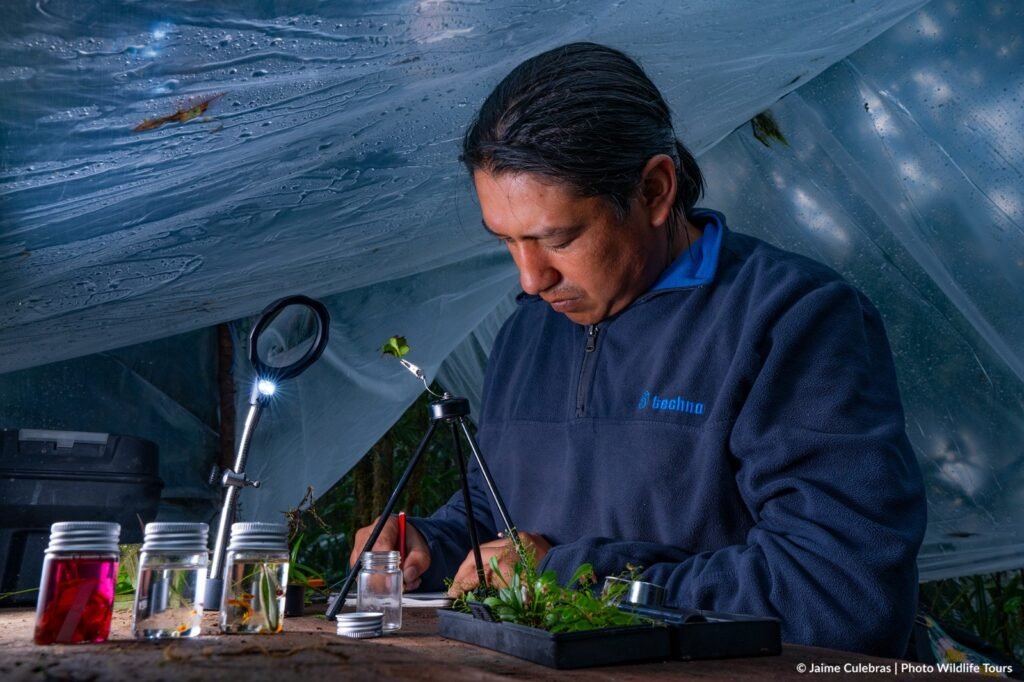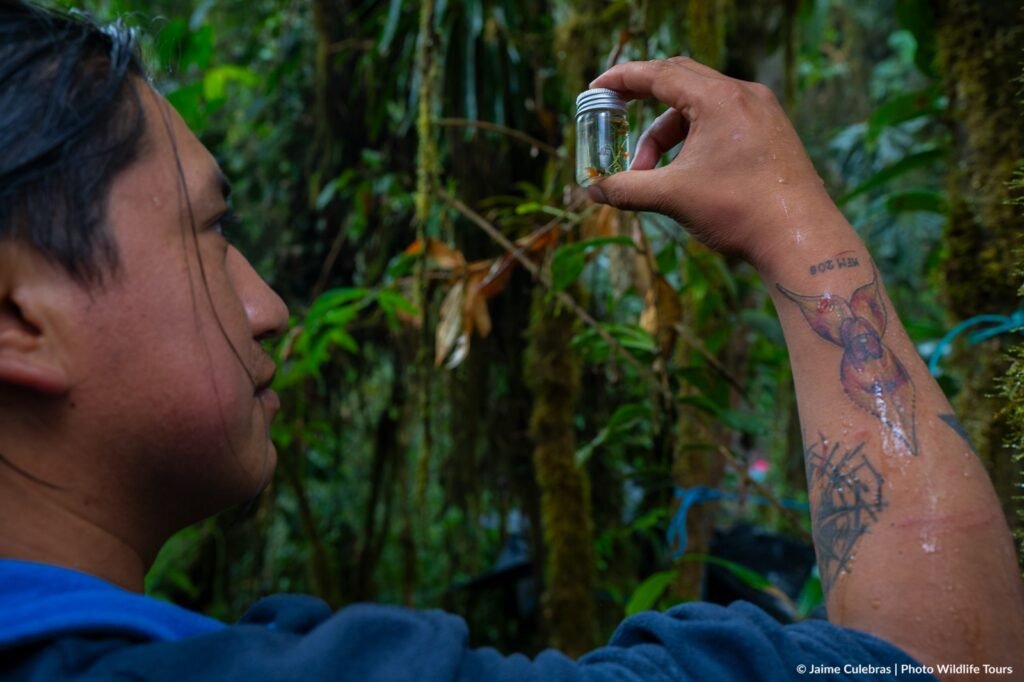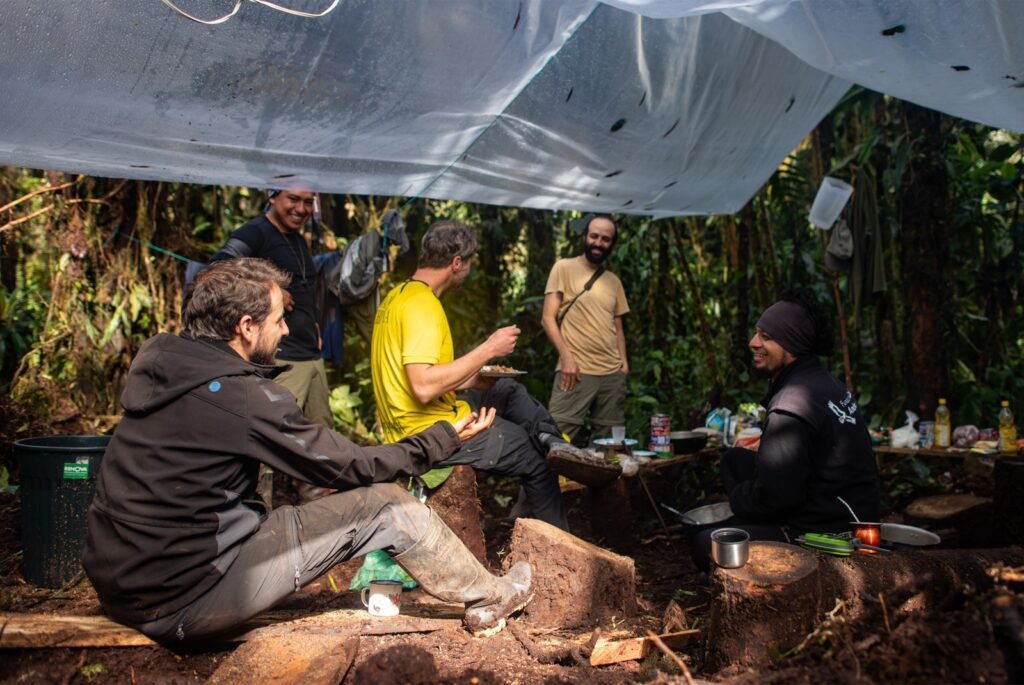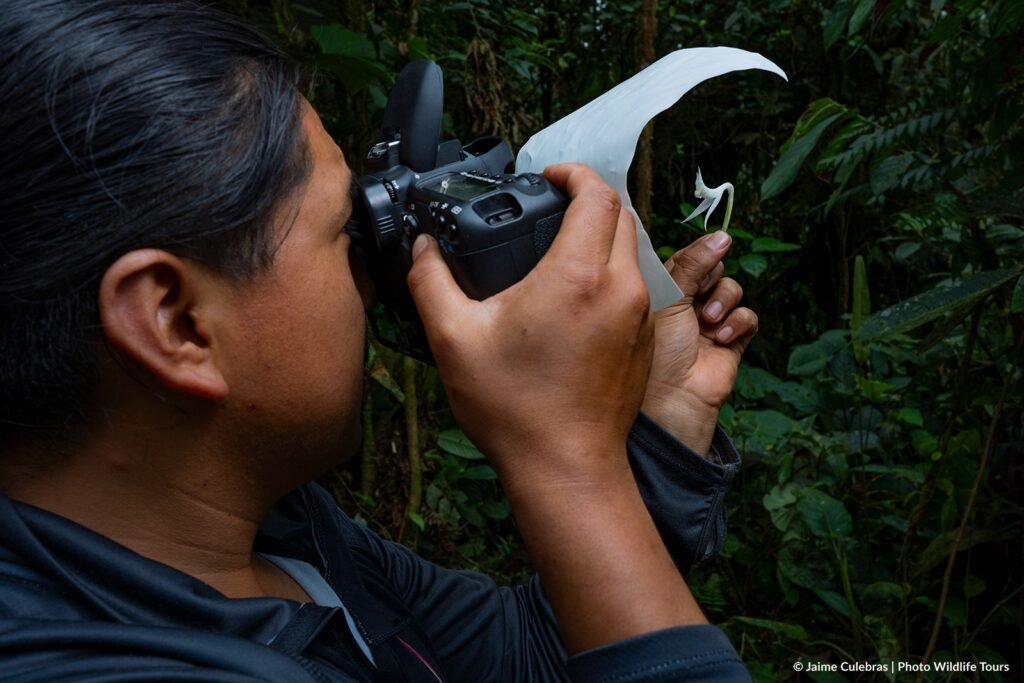In Fundación EcoMinga we use scientific research to base our decisions in conservation. Knowledge of the patterns of endemism in addition to the information we collect to discover new species and threatened at the global level, it helps us to choose the areas that are vital to protecting the wildlife in places unique and irreplaceable.
All reservations are located within areas known as KBAs (Key Biodiversity Areas), and Also promote the training of young people in science for conservation.
Among the projects monitoring and research that we conducted in the ORGANISATION include:





The Fundación EcoMinga conducts research in our reserves, and the species that inhabit them. These spaces provide the ideal place for scientists, researchers, and students to learn more about conservation, biodiversity and methods of research in the field.
Within our 15 bookings we have a great diversity of ecosystems. At the same time, we provide opportunities for scientists and graduate students can continue with their investigations. We have a great knowledge on the biodiversity and the communities in the vicinity of our reserves, which, together with our experience in logistics and permitting of research, allows us to support and collaborate with different researchers in their projects.
So far we have supported numerous research projects in the reserves located in the Corridor of Connectivity Llanganates national park Sangay, booking Río Manduriacu and booking Dracula.
Accommodations for scientific and technical visits
● Booking Dracula – House Of Dracula
● Booking Manduriacu – Home Magnolias
● Reserve, Home of the Frogs Glass
● Booking Rio Anzu – Casa Rio Anzu
For more information please contact us at e-mail info@ecominga.org.
Be part of the change and protects the forest and the biodiversity of our planet.
Quito: Center for International Studies - Marshal Foch E4-308 and Juan León Mera
Bathrooms: Foundation Oscar Efren Reyes - November 12, 270, and Luis A. Martinez
info@ecominga.org
(+593) 995 872237
(+593) 2 2559 094
Non-governmental organization (NGO) Fundación EcoMinga
Copyright © 2024. All rights reserved EcoMinga.
Fundación EcoMinga is a non-ecuadorian non-profit organization that is dedicated to the protection of areas of high endemism and biodiversity.